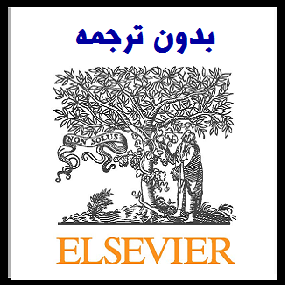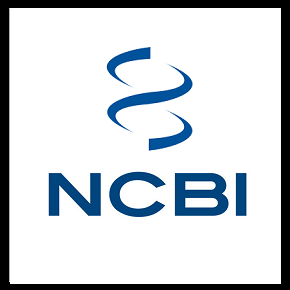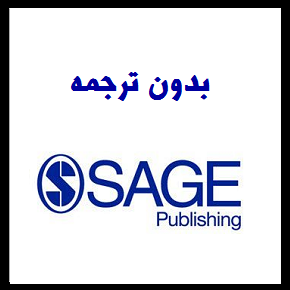مقاله انگلیسی اجرای سیستم های برنامه ریزی منابع سازمانی پایدار (2018 الزویر)


| عنوان فارسی مقاله | توسعه یک چارچوب برای اجرای سیستم های برنامه ریزی منابع سازمانی پایدار |
| عنوان انگلیسی مقاله | Development of a Framework for Sustainable Enterprise Resource Planning Systems Implementation |
| نمونه مقاله انگلیسی | ۱٫ Introduction
Sustainability concept has been formally embraced into business since 1987 through the Brundtland Commission reports (Goni et al., 2015). This notion aims to preserve economic and social advancement while protecting the long-term value of the environment (Gauthier and Wooldridge, 2018). Morioka et al. (2017) stated that the organisations are gradually embedding the sustainability concept into their corporate to endure the competitive advantage. They integrate all sustainability aspects consisting environment, economic, and social into their business processes for adding their business value (Goni et al., 2017). During the implementation of sustainability, organisations face the problem of data and information separation (Chofreh et al., 2014a). Shen (2018) mentioned that they have difficulty tracking their sustainability performance as data and information are not readily available. As a result, decision making becomes inaccurate and redundant. This problem will hinder the achievement of sustainability goals within an organisation (Ahmed and Sundaram, 2012). There is a need to align information system strategy with the sustainability strategy to achieve effective sustainability implementation. Chofreh et al. (2014a) had proposed the Enterprise Sustainable Resource Planning (S-ERP) system to support organisations in addressing segregation issues. This system is a new idea of enterprise systems that help organisations to integrate all entities into their value chains. For implementing the S-ERP systems, practitioners need a master plan that delivers a comprehensive plan of action. Chofreh et al. (2016a) recommended a master plan that presents a holistic plan to implement the S-ERP system. This system embraces three interlocking features including a roadmap, framework, and guidelines. The S-ERP roadmap had been developed by Chofreh et al. (2017a) in their second part of the study and evaluated by Chofreh et al. (2017b) in their third part of the study. The roadmap shows process group to complete the S-ERP systems implementation. The results revealed that the S-ERP implementation roadmap consists of two parts: sustainable enterprise roadmap and sustainably integrated enterprise roadmap. Each of roadmaps includes several phases consisting pre-implementation (initiating, planning, and monitoring/controlling), implementation (planning, executing, closing/transition, and monitoring/controlling), and postimplementation (plan, do, check, and act). The S-ERP framework was developed by Chofreh et al. (2017c) in their fourth part of the study. The framework shows important aspects to consider in implementing the S-ERP systems. The framework comprises of two main aspects including sustainability paradigm (environment, economic, and social) and decisional paradigm (strategy, tactic, and operation). The present study contributes to the evaluation of the S-ERP framework using expert review. Twelve experts from the related field involved in the evaluation process. The collected data is then qualitatively analysed using ATLAS.ti 6 analysis software. The analysis results indicate that the framework requires being divided into two parts: sustainability implementation framework and S-ERP deployment framework. Further explanation of the S-ERP framework is provided in Section 5. Figure 1 illustrates the general idea of the S-ERP master plan. |
| نمونه ترجمه کامپیوتری | 1 مقدمه
مفهوم پایداری به طور رسمی از سال 1987 از طریق گزارش کمیسیون Brundtland به کسب و کار پیوست (Goni et al.، 2015). این مفهوم با هدف حفاظت از پیشرفت اقتصادی و اجتماعی در حین حفاظت از ارزش دراز مدت محیط زیست (Gauthier و Wooldridge، 2018) است. موریوکا و همکاران (2017) اظهار داشت که سازمان ها به تدریج مفهوم پایداری را در شرکت های خود به منظور تحمل مزیت رقابتی جذب می کنند. آنها تمام جنبه های پایداری شامل محیط، اقتصادی و اجتماعی را به فرآیندهای کسب و کار خود اضافه می کنند تا ارزش کسب و کار خود را اضافه کنند (Goni et al.، 2017). در طول اجرای پایدار، سازمان ها با مشکل جداسازی داده ها و اطلاعات مواجه هستند (Chofreh et al.، 2014a). شن (2018) اشاره کرد که دشواری ردیابی عملکرد پایداری خود را دارند، زیرا اطلاعات و اطلاعات به آسانی در دسترس نیستند. در نتیجه تصمیم گیری غلط و غلط است. این مشکل مانع دستیابی به اهداف پایداری در یک سازمان می شود (Ahmed and Sundaram، 2012). نیاز به استراتژی سیستم اطلاعاتی با استراتژی پایداری برای دستیابی به اجرای پایدار موثر وجود دارد. چفره و همکاران (2014a) سیستم برنامه ریزی منابع سازمانی پایدار (S-ERP) را برای حمایت از سازمان ها در زمینه رسیدگی به مسائل جداسازی پیشنهاد کرده است. این سیستم یک ایده جدید از سیستم های سازمانی است که به سازمان ها کمک می کند تا تمام نهادها را در زنجیره ارزش خود ادغام کنند. برای پیاده سازی سیستم های S-ERP، تمرینکنندگان نیاز به یک برنامه جامع دارند که یک برنامه جامع عمل ارائه می دهند. چفره و همکاران (2016a) یک طرح جامع را پیشنهاد کرد که یک برنامه جامع برای پیاده سازی سیستم S-ERP ارائه می دهد. این سیستم شامل سه ویژگی متصل است از جمله نقشه راه، چارچوب و دستورالعمل. نقشه راه S-ERP توسط Chofreh et al. (2017a) در بخش دوم مطالعه خود و توسط Chofreh et al. (2017b) در قسمت سوم این مطالعه. نقشه جاده نشان می دهد گروه فرآیند برای تکمیل اجرای سیستم های S-ERP. نتایج نشان داد که نقشه راه پیاده سازی S-ERP از دو بخش تشکیل شده است: نقشه پایدار سازمانی و نقشه راه یکپارچه سازمانی. هر برنامه ریزی شامل چندین مرحله شامل پیش از پیاده سازی (آغاز، برنامه ریزی، و نظارت / کنترل)، اجرای (برنامه ریزی، اجرای، بسته شدن / انتقال و نظارت / کنترل) و اجرای پست (برنامه ریزی، انجام، بررسی و عمل). چارچوب S-ERP توسط Chofreh et al. (2017c) در قسمت چهارم این مطالعه. چارچوب جنبه های مهمی را که در اجرای سیستم های S-ERP در نظر گرفته می شود، در نظر می گیرند. چارچوب شامل دو جنبه اصلی شامل پارادایم پایداری (محیط زیست، اقتصادی و اجتماعی) و پارادایم تصمیم (استراتژی، تاکتیک و عملیات) است. این مطالعه به بررسی چارچوب S-ERP با استفاده از بررسی تخصصی میپردازد. دوازده نفر از متخصصین مربوطه در زمینه فرآیند ارزیابی درگیر شدند. داده های جمع آوری شده سپس با استفاده از نرم افزار تحلیل ATLAS.ti 6 تجزیه و تحلیل می شوند. نتایج تجزیه و تحلیل نشان می دهد که چارچوب نیاز به تقسیم شدن به دو بخش دارد: چارچوب پیاده سازی پایداری و چارچوب استقرار S-ERP. توضیحات بیشتر در مورد چارچوب S-ERP در بخش 5 ارائه شده است. شکل 1، ایده کلی طرح اصلی S-ERP را نشان می دهد. توجه؛ (این ترجمه توسط نرم افزار انجام شده و ویرایش نشده است و احتمال وجود اشتباه در آن وجود دارد. در صورت ثبت سفارش، ترجمه توسط مترجمین مجرب انجام خواهد شد. برای مشاهده نمونه ترجمه های تخصصی و اخیر مترجمین جهت اطمینان از کیفیت ترجمه، اینجا کلیک نمایید.) |
| سال انتشار | 2018 |
| ناشر | الزویر |
| مجله | مجله تولید پاک – Journal of Cleaner Production |
| کلمات کلیدی | برنامه ریزی منابع سازمانی پایدار؛ پیاده سازی؛ نقشه اصلی؛ چارچوب؛ ارزیابی |
| کلمات کلیدی انگلیسی |
Sustainable enterprise resource planning; implementation; master plan; framework; evaluation |
| صفحات مقاله انگلیسی | 33 |
| مناسب برای رشته | مدیریت |
| مناسب برای گرایش | مدیریت استراتژیک، مدیریت کسب و کار |
| توضحیات | این مقاله انگلیسی جدید بوده و تا کنون ترجمه نشده است. جهت ثبت سفارش ترجمه از لینکهای زیر استفاده نمایید. |
| دانلود مقاله انگلیسی | ○ دانلود رایگان مقاله انگلیسی با فرمت pdf (کلیک کنید) |
| سفارش ترجمه فارسی | ○ سفارش انجام ترجمه و تایپ این مقاله (کلیک کنید) |
| سایر مقالات این رشته | ○ مشاهده سایر مقالات رشته مدیریت (کلیک کنید) |



